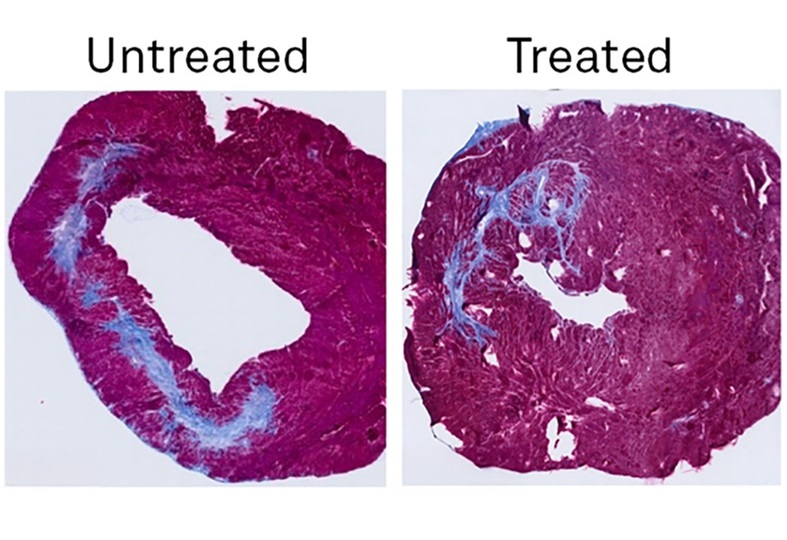Robotics Arthoplasty System Helps Restore Active Lifestyle 
|
By HospiMedica International staff writers Posted on 29 Jul 2021 |

Image: The CORI Surgical System (Photo courtesy of Smith & Nephew)
A next generation robotics knee platform boasts a modular design that enables it to be scaled across the orthopaedic service line.
The Smith & Nephew (London, United Kingdom) CORI Surgical System is a handheld robotics solution intended for both unicompartmental and total knee arthroplasties. At the heart of the system is the ATRACSYS (Puidoux, Switzerland) fusionTrack 500, which is composed of two cameras designed to detect and track fiducials (reflective spheres, disks, and/or IR-LEDs) with sub-millimeter accuracy. Using triangulation to retrieve the 3D position of each fiducial, CORI then build a computer-rendered model of the patient’s knee to create a patient-specific surgical plan based on the unique shape and motion of the patient's knee.
From the model, the system then calculates the correct implant needed, and instructs the surgeon on how much bone material needs to be removed, and exactly where to remove it, so as to prepare the ideal surface for the implant. During surgery, the CORI handpiece removes the damaged section of the knee joint, guided by the pre-surgical 3D model to accurately differentiate between damaged and healthy areas. This helps patients keep more natural bone and ligaments, including the anterior cruciate ligament (ACL), contributing to a more natural gate.
“Instead of a bulky appliance moving your hand during surgery, CORI allows you to perform the procedure while it corrects for you. It keeps the surgeon in control and makes everything more elegant,” said surgeon Jimmy Chow, MD, of the Orthopedic Institute of the West (Phoenix, AZ, USA). “Smith+Nephew's Real Intelligence ecosystem puts the surgeon at the center by combining all aspects of patient care, hardware, software and data solutions to enhance decision-making in and out of the OR.”
Unicompartmental knee replacement involves placing an implant on just one side of the knee, rather than over the entire surface of the knee joint, as is the case in total knee replacement (TKR). Because the incision is smaller, patients suffer less pain, spend less recovery time in the hospital, and can be active sooner. The procedure also reduces risks of infection or blood loss. Patients treated with partial knee replacement have more functionality and greater range of motion than patients treated with a TKR.
Related Links:
Smith & Nephew
ATRACSYS
The Smith & Nephew (London, United Kingdom) CORI Surgical System is a handheld robotics solution intended for both unicompartmental and total knee arthroplasties. At the heart of the system is the ATRACSYS (Puidoux, Switzerland) fusionTrack 500, which is composed of two cameras designed to detect and track fiducials (reflective spheres, disks, and/or IR-LEDs) with sub-millimeter accuracy. Using triangulation to retrieve the 3D position of each fiducial, CORI then build a computer-rendered model of the patient’s knee to create a patient-specific surgical plan based on the unique shape and motion of the patient's knee.
From the model, the system then calculates the correct implant needed, and instructs the surgeon on how much bone material needs to be removed, and exactly where to remove it, so as to prepare the ideal surface for the implant. During surgery, the CORI handpiece removes the damaged section of the knee joint, guided by the pre-surgical 3D model to accurately differentiate between damaged and healthy areas. This helps patients keep more natural bone and ligaments, including the anterior cruciate ligament (ACL), contributing to a more natural gate.
“Instead of a bulky appliance moving your hand during surgery, CORI allows you to perform the procedure while it corrects for you. It keeps the surgeon in control and makes everything more elegant,” said surgeon Jimmy Chow, MD, of the Orthopedic Institute of the West (Phoenix, AZ, USA). “Smith+Nephew's Real Intelligence ecosystem puts the surgeon at the center by combining all aspects of patient care, hardware, software and data solutions to enhance decision-making in and out of the OR.”
Unicompartmental knee replacement involves placing an implant on just one side of the knee, rather than over the entire surface of the knee joint, as is the case in total knee replacement (TKR). Because the incision is smaller, patients suffer less pain, spend less recovery time in the hospital, and can be active sooner. The procedure also reduces risks of infection or blood loss. Patients treated with partial knee replacement have more functionality and greater range of motion than patients treated with a TKR.
Related Links:
Smith & Nephew
ATRACSYS
Latest Surgical Techniques News
- DNA Origami Improves Imaging of Dense Pancreatic Tissue for Cancer Detection and Treatment
- Pioneering Sutureless Coronary Bypass Technology to Eliminate Open-Chest Procedures
- Intravascular Imaging for Guiding Stent Implantation Ensures Safer Stenting Procedures
- World's First AI Surgical Guidance Platform Allows Surgeons to Measure Success in Real-Time
- AI-Generated Synthetic Scarred Hearts Aid Atrial Fibrillation Treatment
- New Class of Bioadhesives to Connect Human Tissues to Long-Term Medical Implants
- New Transcatheter Valve Found Safe and Effective for Treating Aortic Regurgitation
- Minimally Invasive Valve Repair Reduces Hospitalizations in Severe Tricuspid Regurgitation Patients
- Tiny Robotic Tools Powered by Magnetic Fields to Enable Minimally Invasive Brain Surgery
- Magnetic Tweezers Make Robotic Surgery Safer and More Precise
- AI-Powered Surgical Planning Tool Improves Pre-Op Planning
- Novel Sensing System Restores Missing Sense of Touch in Minimally Invasive Surgery
- Headset-Based AR Navigation System Improves EVD Placement
- Higher Electrode Density Improves Epilepsy Surgery by Pinpointing Where Seizures Begin
- Open-Source Tool Optimizes Placement of Visual Brain Implants
- Easy-To-Apply Gel Could Prevent Formation of Post-Surgical Abdominal Adhesions
Channels
Critical Care
view channel
New Potent Injectable Therapy Could Prevent Heart Failure After Heart Attack
According to the U.S. Centers for Disease Control and Prevention, 6.7 million Americans aged 20 and older are living with heart failure, a condition in which the heart cannot pump enough blood to meet... Read more
Drug Delivery System Uses Ultrasound-Activated Nanoparticles to Destroy Bacterial Biofilms
Chronic antibiotic-resistant infections have become a global health crisis, impacting hundreds of millions of individuals worldwide. In as many as 80% of chronic infections, bacteria form biofilms—slimy... Read more
Hospital-Based System Combines AI and Genomic Surveillance to Quickly Detect Infectious Disease Outbreaks
The current approach used by hospitals to detect and prevent the transmission of infectious diseases among patients is outdated. These methods have remained largely unchanged for over a century.... Read morePatient Care
view channel
Portable Biosensor Platform to Reduce Hospital-Acquired Infections
Approximately 4 million patients in the European Union acquire healthcare-associated infections (HAIs) or nosocomial infections each year, with around 37,000 deaths directly resulting from these infections,... Read moreFirst-Of-Its-Kind Portable Germicidal Light Technology Disinfects High-Touch Clinical Surfaces in Seconds
Reducing healthcare-acquired infections (HAIs) remains a pressing issue within global healthcare systems. In the United States alone, 1.7 million patients contract HAIs annually, leading to approximately... Read more
Surgical Capacity Optimization Solution Helps Hospitals Boost OR Utilization
An innovative solution has the capability to transform surgical capacity utilization by targeting the root cause of surgical block time inefficiencies. Fujitsu Limited’s (Tokyo, Japan) Surgical Capacity... Read more
Game-Changing Innovation in Surgical Instrument Sterilization Significantly Improves OR Throughput
A groundbreaking innovation enables hospitals to significantly improve instrument processing time and throughput in operating rooms (ORs) and sterile processing departments. Turbett Surgical, Inc.... Read moreHealth IT
view channel
Printable Molecule-Selective Nanoparticles Enable Mass Production of Wearable Biosensors
The future of medicine is likely to focus on the personalization of healthcare—understanding exactly what an individual requires and delivering the appropriate combination of nutrients, metabolites, and... Read more
Smartwatches Could Detect Congestive Heart Failure
Diagnosing congestive heart failure (CHF) typically requires expensive and time-consuming imaging techniques like echocardiography, also known as cardiac ultrasound. Previously, detecting CHF by analyzing... Read moreBusiness
view channel
Expanded Collaboration to Transform OR Technology Through AI and Automation
The expansion of an existing collaboration between three leading companies aims to develop artificial intelligence (AI)-driven solutions for smart operating rooms with sophisticated monitoring and automation.... Read more
















